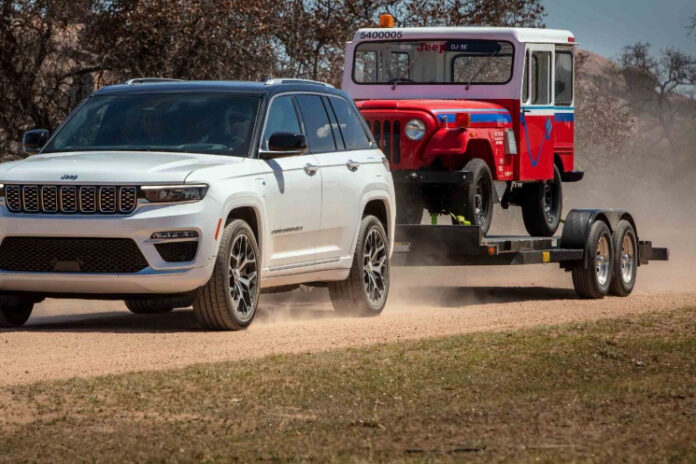Boxes and roof racks are not always enough. This is why many motorists are more interested than ever in towing capacity.
This varies from one model to another and sometimes even depending on the version chosen. And don’t worry, some manufacturers go so far as to prohibit towing any load. For what ? Several factors come into play. Among them: the power of the engine, the robustness of the transmission, the capacity of the cooling system, the solidity of the frame or the braking resistance. Want to go against the manufacturer’s ordinances? This could void its warranty in the event of mechanical failure. But even worse, by taking certain liberties, the motorist exposes his occupants and other road users to a real danger: that of losing control of his vehicle.
The word of a representative of a concessionaire or a neighbor is not enough. You should consult the owner’s manual or the data plate that is affixed to the inside frame of the door. You also need to know if the listed capacity is for a trailer with or without built-in brakes. Other information to collect is the allowable tire weight. This indication is found on the sidewall of the tires. Play the calculator now and save yourself some margins.
Got the trailer (or trailer), but not yet the vehicle to tow it? Know then that the pickup truck, due to its longer wheelbase, is best suited (the most stable too) if you have a very heavy load (over 5000 lbs) to pull. That said, regardless of the vehicle, some calculations are required. The weight of the occupants of the vehicle, their luggage and all the equipment stored in the trailer or trailer following behind must be deducted from the capacity displayed. Also, make sure that the weight of the hitch does not exceed 10% to 15% of the towing capacity.
Rest assured, some electric vehicles can tow loads, but this will reduce their range. So, if you plan to tow a load with a battery-powered vehicle, locate the charging stations on your route in advance and make sure they are accessible. And for good reason, since in many cases, you will have to unhitch your convoy to have access to a terminal without disturbing the surrounding traffic.
The oscillations that are observed at cruising speed are among the main fears among novices of towing. The best way to avoid them is to load your trailer methodically. Thus, the heaviest objects should be placed as low as possible, and as close as possible to the axle. When hooking up the trailer, check that it is properly balanced: the vehicle should not sag or sit up.
Towing a load is no picnic. The drag coefficient in the air is catastrophic and you have to hold on to your steering wheel to avoid the “swing”, that moment when the “cart” you are pulling starts to sway quite a bit. Therefore, some turbulence is to be expected, especially when you are close to heavier vehicles than yours. We catch our breath, and return to basics.
The maneuvers (cornering at low speed, in particular), the behavior and the braking are very different. Anticipation becomes the key word here.
If the speed at which you are driving creates a traffic jam behind you, be courteous and stop in a safe place to let vehicles pass. For novices, it is better to gain experience and put away any overtaking manoeuvre. Avoid braking and over-correcting the steering wheel.
Maneuvering in reverse is also quite a challenge. Some vehicles (vans, in particular) offer driving aids to make your job easier. However, to overcome a technical failure, it is better to familiarize yourself without them. Your learning period will only be faster and more complete. It is important to understand that by steering as usual to one side, the trailer steers to the other.
Get help for the most complex maneuvers or put them into practice in a safe environment (the parking lot of a shopping center on a Sunday at dusk, for example) to master this particularity.
Before securing a load to your vehicle, it is important to carry out more checks.
For the “tractor” vehicle, ensure that it is in good mechanical condition (don’t forget the tires). Make sure your vehicle’s oil change is done at the time recommended by the manufacturer and even a little earlier. Some specialists consulted suggest an oil change every three months or 5000 km, whichever comes first.
If your new vehicle has an internal combustion engine, we also recommend that you do not tow a trailer during the break-in period or until the first oil and filter change.
After this period, some even recommend not exceeding 80 km/h for at least the first 1000 km. This information – and many other tips – is usually found in the owner’s manual. In addition to these basic precautions, the transmission’s cooling system and oil viscosity deserve a thorough check.
As for the trailer (this also applies to a trailer), it is just as important to ensure that it is in good condition. Especially if it has been stored outside without any real protection during the winter season. Fasteners, brakes, tires and stabilizer bars should be inspected very carefully. Just like connecting to your vehicle.















